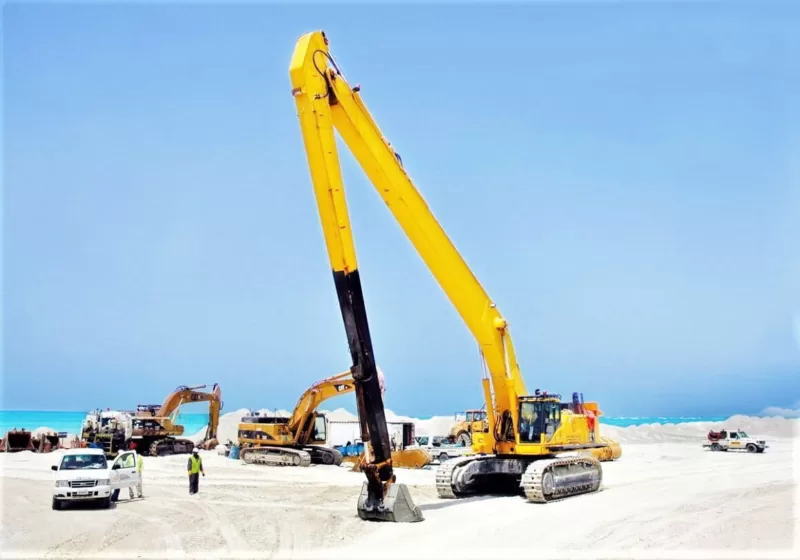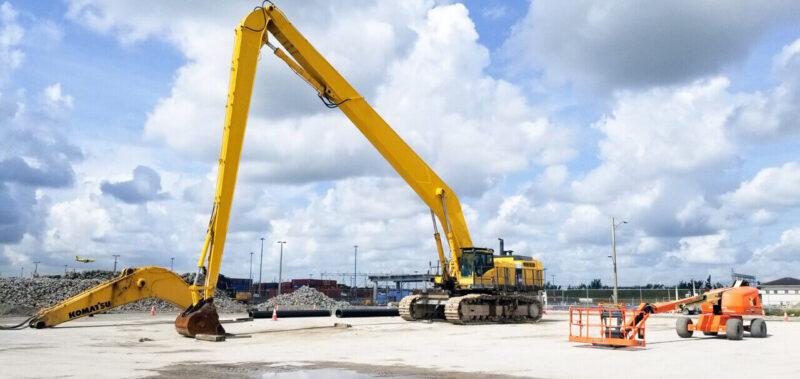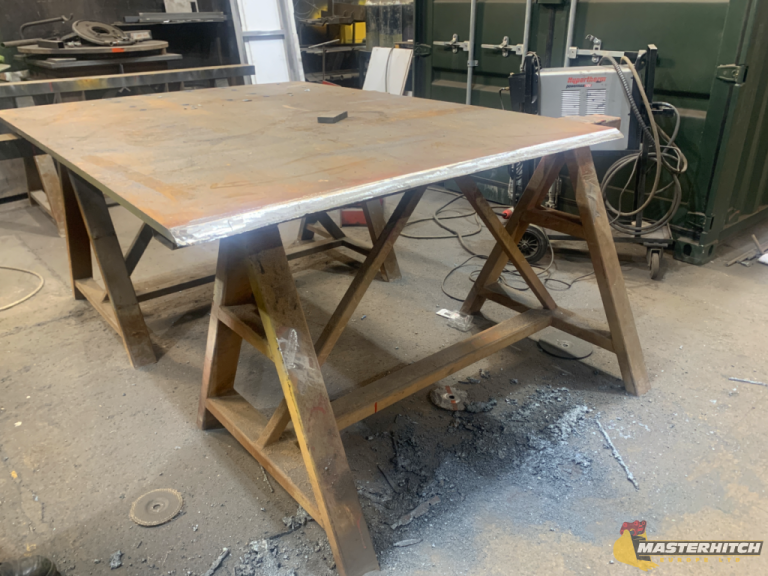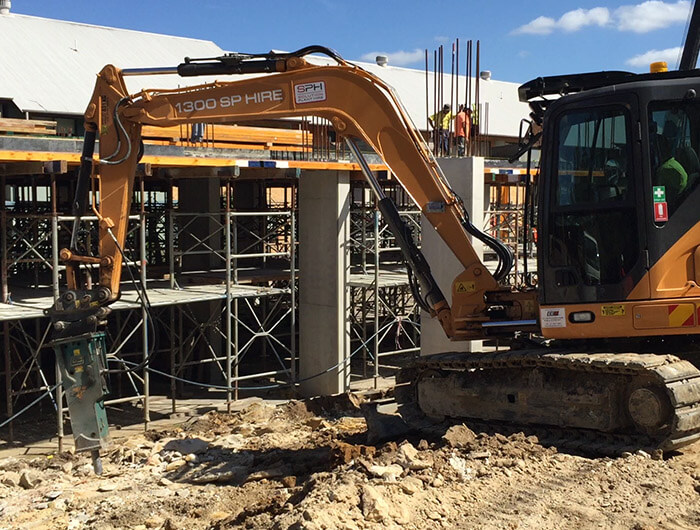excavator long reach front advantage when reclamation by the sea
The relentless march of urbanization and industrialization has led to an unprecedented demand for land, especially in coastal regions. As cities expand and industries grow, the need for more space becomes crucial. This is where sea reclamation operations come into play, transforming vast stretches of water into habitable land. However, the traditional methods of reclamation have often been time-consuming, resource-intensive, and environmentally detrimental. Enter the excavator long reach front, a technological marvel that has revolutionized sea reclamation operations, offering a host of advantages that make the process faster, more efficient, and less harmful to the environment.

The Evolution of Sea Reclamation
Sea reclamation, the process of creating new land by filling in coastal waters, has been practiced for centuries, often relying on manual labor and rudimentary machinery. The advent of heavy machinery in the 20th century brought significant improvements, allowing for faster and larger-scale reclamation projects. However, these methods were still limited by the reach and capabilities of the equipment used.
Enter Excavator Long Reach Front
Excavator long reach front, also known as long-reach excavators, have emerged as a game-changer in sea reclamation operations. These specialized machines are equipped with extendable arms, some reaching lengths of over 100 feet, which enable them to reach farther into the water and handle larger volumes of material. This innovation has brought about a series of advantages that are transforming the landscape of sea reclamation.
-
Increased Reach and Efficiency
Perhaps the most significant advantage of excavator long reach front is their extended reach. Traditional excavators have limitations in terms of how far they can extend their digging arms. This means that a significant portion of the reclamation area might remain untouched or require multiple repositioning of the machine. Excavator extension arms, however, can reach much farther from a single position, reducing the need for constant movement and repositioning. This results in increased efficiency, as operators can cover larger areas in less time, ultimately accelerating the reclamation process.
-
Reduced Environmental Impact
Environmental conservation and sustainability have become critical concerns in modern construction and development. Traditional sea reclamation methods often involve dredging and disposing of large volumes of sediment, disturbing marine ecosystems and causing water pollution. The extended reach of excavator long reach front allows for more precise excavation, minimizing the disturbance to underwater habitats and reducing the overall impact on marine life. Additionally, these arms enable operators to work from a safe distance, minimizing the risk of accidental damage to sensitive areas.
-
Cost-Effectiveness
While the initial investment in excavator long reach front may be higher compared to traditional excavators, the long-term cost savings are substantial. The increased efficiency and productivity offered by these machines translate to reduced labor costs and shorter project durations. The reduced need for repositioning also leads to less wear and tear on the equipment, contributing to lower maintenance and repair expenses. Over the course of a large-scale reclamation project, these cost savings can be significant, making excavator extension arms a financially viable choice.
-
Versatility and Adaptability
Excavator long reach front are versatile machines that can be adapted for various sea reclamation tasks. Their adjustable arms can be equipped with different attachments, such as buckets, clamshells, and hydraulic hammers, allowing them to handle a wide range of materials, from soft sediments to hard rock. This adaptability makes them suitable for different types of reclamation projects, whether it involves creating foundations for buildings, constructing breakwaters, or shaping the coastline.
-
Improved Safety for Operators
Safety is a paramount concern in any construction operation. Excavator extension arms enhance operator safety by allowing them to work from a distance, minimizing the risk of accidents and injuries. Operators can control the machine and its attachments with precision, reducing the need for close proximity to potentially hazardous areas. Additionally, many modern excavator extension arms are equipped with advanced technology, such as remote monitoring and control systems, further enhancing operator safety.
Conclusion
In the realm of sea reclamation operations, excavator long reach front have emerged as a revolutionary tool, transforming the way we create new land from the sea. With their extended reach, efficiency, reduced environmental impact, cost-effectiveness, versatility, and improved safety, these technological marvels are setting new standards for sustainable and efficient coastal development. As urbanization continues to drive the demand for land, excavator extension arms are poised to play a pivotal role in shaping the future of sea reclamation, enabling us to expand our horizons while treading lightly on the delicate ecosystems of our oceans.

Challenges and Future Prospects
While excavator long reach front offer numerous advantages, it’s important to acknowledge that challenges still exist in their implementation and use. One challenge is the need for skilled operators who can effectively maneuver these complex machines, especially in delicate underwater environments. Training and education programs must be developed to ensure that operators are well-versed in the intricacies of handling excavator extension arms, both for efficient operation and to prevent potential environmental damage.
Furthermore, as technology continues to advance, there is room for even more innovation in the field of sea reclamation. Research and development efforts could lead to the creation of excavator extension arms with improved capabilities, such as enhanced underwater imaging systems for better visibility and precision, and autonomous or semi-autonomous operation for increased safety and efficiency.
Looking ahead, the integration of excavator extension arms with other emerging technologies, such as drones and underwater robotics, could revolutionize the entire process of sea reclamation. Drones equipped with advanced imaging and mapping capabilities could provide real-time data to guide excavator operations, ensuring optimal excavation depths and accurate placement of reclaimed materials. Underwater robotics could assist in tasks that are challenging for traditional machinery, such as underwater leveling and shaping of reclaimed areas.
Environmental Considerations
While excavator long reach front offer significant environmental benefits compared to traditional reclamation methods, it’s important to remain vigilant about their potential impact. Monitoring and assessment of the surrounding marine ecosystem before, during, and after reclamation projects should be a standard practice to ensure that any unintended consequences are minimized. In some cases, reclamation projects might be better suited for certain locations or may require additional mitigation measures to preserve local biodiversity.
Additionally, efforts should be made to explore and implement eco-friendly materials for reclamation fill, which can further reduce the environmental footprint of these operations. Utilizing recycled materials, such as crushed concrete or reclaimed soil, can significantly lessen the demand for natural resources and limit the amount of new material extracted from the environment.
Conclusion: Excavator Long Reach Front Pioneering a New Era of Reclamation
Excavator extension arms have brought about a paradigm shift in sea reclamation operations, ushering in a new era of efficiency, sustainability, and environmental responsibility. These machines empower us to create new land to meet the ever-growing demands of urbanization while minimizing our impact on fragile marine ecosystems. As technology continues to advance and innovation propels us forward, the potential for further refining and enhancing excavator long reach front is boundless.
By embracing these advancements and fostering a holistic approach that combines technology, environmental stewardship, and sound engineering practices, we can pave the way for a future where sea reclamation becomes a harmonious endeavor, benefiting both human populations and the natural world. As excavator extension arms extend their reach and capabilities, we too extend our aspirations for a more resilient, interconnected, and sustainable planet. The vast expanse of the sea is no longer a barrier -it’s a canvas on which we can paint new possibilities for a better tomorrow.




